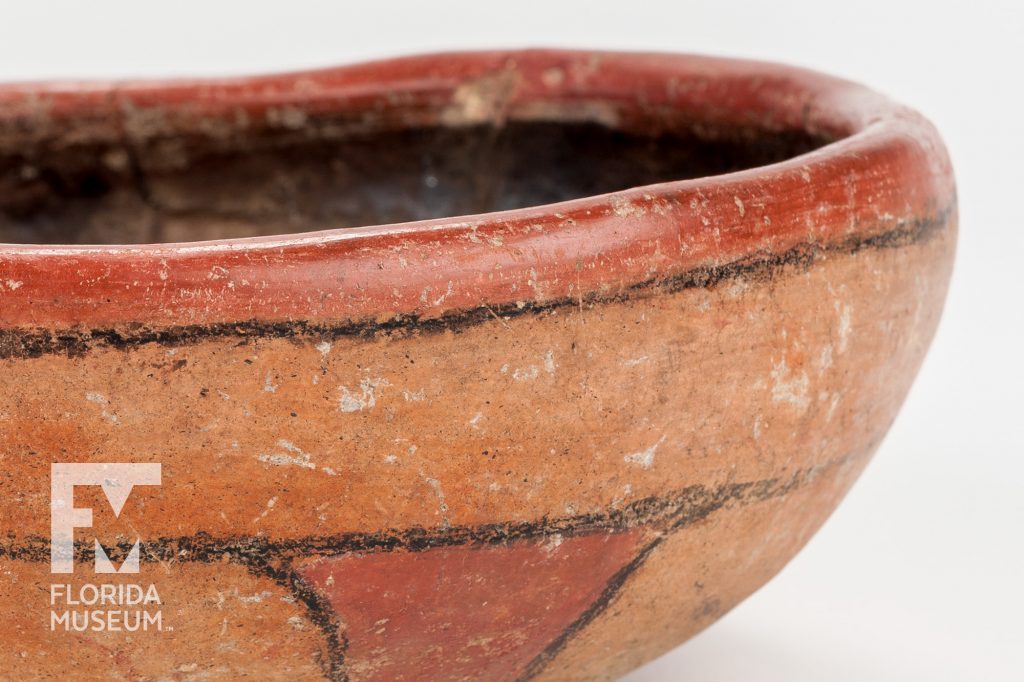In the Caribbean, native people frequently used alcohol or hallucinogens during ceremonies to communicate with spirits. The black resin in this vessel provides rare archaeological evidence of this practice, with the vessel size indicating communal drinking.
Summary
Manioc Beer Pottery Vessel
Made by Native Island peoples, Grenada
Dates to ~AD 1200–1400
Collection
Story
What you are looking at is a pottery vessel from the Caribbean. It has a very elaborate design for this time period. Often we distinguish between pottery that we believe was used for domestic purposes, which tends not to be very highly decorated, and those that were used for ceremonial purposes, in which case you want to put your best side forward. In some ways it’s like having a party at your house where you either bring out the plain Corelle ware or grandma’s good china.
This vessel is interesting because of the black resin that was coated on the interior. The black resin was often used to protect the interior of the pottery vessel from a liquid that was highly acidic and we know that in some cases — we don’t know this one specifically — but we believe that this resin was used with manioc beer.
Manioc beer is a very interesting development in the Caribbean — actually it started in South America — in which what you may know as cassava or manioc is first boiled to make it soft and then the women would actually chew the cassava for a bit, spit it into a large container and allow it to ferment. This beer is mildly intoxicating, although some societies drink quarts and quarts of it a day, preferring it to water. The resin helps protect the pottery from deteriorating with this highly acidic liquid inside of it.
So the vessel is important for us because it gives us some indication of the kind of ceremonies that were being performed, it gives us an idea of the kind of plants that were being grown and also gives a little bit of an insight into the types of ceremonial activities that were probably practiced.
Bill Keegan
Curator, Caribbean Archaeology*
Florida Museum of Natural History
Exhibit
On display Sept. 23, 2017-Jan. 7, 2018, Rare, Beautiful & Fascinating: 100 Years @FloridaMuseum celebrated the Museum’s rich history. Each Museum collection was asked to contribute its most interesting items and share the stories that make them special. Though the physical exhibit is closed, this companion website remains online, providing an opportunity to experience the Florida Museum’s most treasured specimens.
Exhibit Area: Objects Tell Stories
Theme: Ancient Artifacts
 Want to see more? Explore more than 300 breathtaking color photos of plants, animals, fossils and cultural heritage materials from the Florida Museum of Natural History’s collections in the award-winning book All Things Beautiful available from the University Press of Florida.
Want to see more? Explore more than 300 breathtaking color photos of plants, animals, fossils and cultural heritage materials from the Florida Museum of Natural History’s collections in the award-winning book All Things Beautiful available from the University Press of Florida.
*This title was accurate at the time the exhibit was on display in 2017. Please visit the collection website to verify current staff and student information.

